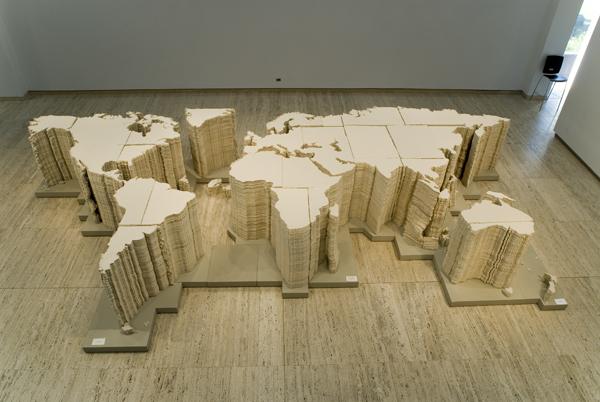



What is pattern making/what are the specifics of pattern making as it is in fashion?
Pattern-making is the process of drafting the designed shape and form of an intended garment. In involves drawing the shapes in specific measurements and directions to create shapes, which will fit together to configure a piece of clothing. Markings are made up of lines including, paths of sewing which are also joining lines, seam allowances which at their edge also denote cut lines, notches which are cardinal points denoting matching of pieces, therefore its markings denote immanent construction and doing. Pattern making is functional, technical and pragmatic. It is a part of the garment production practice that involves problem solving, in a desire to get form from a flat plane. As a result many systems and rules have been developed to easily adapt shapes to different body types with a consistency in fit and form.
Pattern making is done in the two dimension (as paper and fabric is flat) . More often than not, the greater parts of these shapes are created with the existence of the y-axis in mind. The fabric walls of a garment run up and down the body. The planes cover the vertical, upright, standing human figure. As stated in PATRONEN - “Although apparel is a fundamental element of the arts of movement, it is also, as the pattern reminds us, an art de l’espace, akin to architecture and physical sculpture. The pattern serves as a separate, a figurative architecture in its own right.” The way in which a pattern measures, configures and records space is integral to the way in which it’s space is experiences. Can the process of drafting, inform the design itself and concluding experience.
How do you want to change the approach?
There are many ways in which space is recorded and understood amongst varying design practices and ontological outlooks.
ARCHITECTURE - In looking at an architectural draft commonly a number of view points are given. These may include elevations of the structures sides, cross sections of cuts through the form, isometric and axonometric viewpoints of the structures outside, interior perspectives from inside the building and importantly a floor plan. Architecture needs to document both inside and outside which is important to note. Also a floor plan - taken from the birds eye view - is probably the most seminal as denotes understanding and reference for other drafts.
LANDSCAPE DESIGN/GEOGRAPHY - Landscape designs seminal view is from above, a birds-eye view of the environments layout. A variant of this, existing in a more geographically studied context is the typographical view - mapping the surface rise and relief of land. Landscape designers way also give a side on view from being within the designed environment.
INTERIOR DESIGNERS - Interior designers create drafts of perspectives looking upon an inside wall.
INDUSTRIAL DESIGN - Industrial design documents viewpoint of all sides of the object, including from above. Also in some cases a cross section if the form has specific mechanics or interior parts.
FASHION - When looking in the context of fashion design, there are technical illustrations of side views of garment. There is also the pattern-making draft; drafting of pattern planes of the up and down fabric wall. For a long time the pattern has looked at the wearers space in this way. It is one of the few design disciplines that does not have a bird’s-eye view in developmental drafts. I think a greater understanding of a garment’s spacial insides and reliefs of outsides can be realised with a different approach of pattern-making.
I essence I want to change the axis on which pattern making is done. I want to pattern make on the x-axis. I also want to pattern make a worn garment, not a disembodied garment. This is done by taking horizontal cuts of a garment on the body. The space recorded is that which exists between fabric wall and skin of the body. What exists either side of the cutline can be used in different ways of creating an experience.
Why?/ What will it achieve.
Recording fashion in this way, kind of stems from the ‘lay’. The lay being when fabric is laid horizontally and pieces are placed and cut. In the project’s context what exists either side of the cutline can be used in different ways of creating an experience. The dead air space outside a garments fabric walls becomes solidified and can be worn. Conversely the empty space inside a garment gets a greater form giving a new way of embodying a garment. By giving new types of forms to the lines and thresholds of wearing’s beginnings and endings, the experience of wearing itself may be questioned. By looking at the garment as space and flipping its foundations of construction to x-axis, this possibly may take emphasis off face-on views of a garment, or that of onlookers. It way take understanding back to an intimate feeling of wearing a garments space.

No comments:
Post a Comment